[Editor’s note: Under the White Gaze originally ran as an exclusive Tyee email newsletter last fall. We’re republishing the full series of essays on our site this month. This essay, the second in the series, was originally titled 'Darlings! Deviants! And Other Diversity Tropes!']
An Elder once told journalist and CBC host Duncan McCue that the only way an Indigenous person would make the news is if they were one of the four Ds: drumming, dancing, drunk or dead.
McCue, who is Anishinaabe, was taken aback. Surely not? It sounded too simplistic.
But the Ds kept coming up in coverage, along with the stereotype of the “warrior.” (Remember the masked protester photographed during the Oka Crisis of 1990?)
I read McCue’s analysis of these stereotypes back in my first year as a journalist, and they’ve stuck with me ever since.
Coverage of Indigenous issues is slowly improving, but the warrior frame and the Ds still persist, McCue told me recently.
“I wish I could say they’ve gone away,” he said. “You only need to see something like Walking Eagle, and you can see that there are reporters making grievous errors on a regular basis and still following the same tropes.”
Walking Eagle is a satirical Indigenous news site in a similar style to the Onion. Its headlines lampoon real news. Two recent ones: “Cities allow alcohol consumption in parks now that white people want to do it,” and “'This country may have mass graves at schools but we draw the line at pulling down statues,’ leaders say.”
Over the years, I couldn’t help but notice another pattern: a series of tropes used in news coverage of racialized groups in Canada, each related to the white gaze.
Have you spotted them at work?
Darlings
Canada’s news media love stories of “model minorities” who work hard.
The immigrants who never want to retire. The children who are the first in their family to go to university. The dutiful worker who sends money overseas to their family. The quirky elders with foreign wisdom to share with locals.
These stories zoom in on a diaspora’s love of Canada or Canada as a land of opportunity, with journalists pouring on the patriotic quotes. “There’s nothing that could stop Canadians from doing whatever they put their mind to,” says one happy refugee in a CBC piece, who also encourages newcomers to “be an example to your community.”
The stories often include Canadian flags, Christmas celebrations and a love of that unifying national pastime — in other words, it’s coverage that seems like a Tim Hortons’ ad.
But these stories often imply that hard work and love of country are all it takes to succeed in Canada.
Were there other supports along the way? And are publications also covering the racialized people who don’t make it, the barriers they face and why?
Deviants
I’m not talking about the villains of that Marvel movie Eternals.
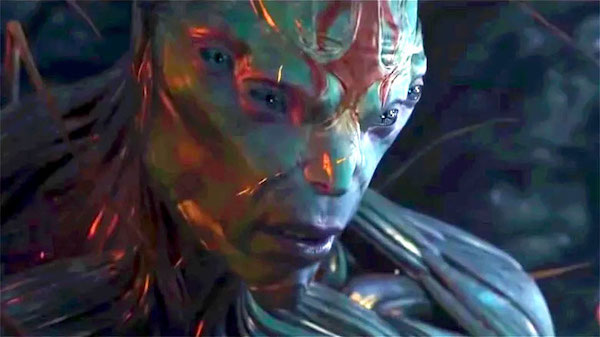
I’m talking about bad minorities. If we have model minorities, then we must have bad ones, right? The freeloaders, the uncivilized, those who don’t integrate, commit crimes or are just plain lazy. (Ontario Premier Doug Ford recently said any immigrant who isn’t willing to “work your tail off” should stay away.)
The old frame of an “unassimilable race” causing trouble still pops up, along with the “invasion narrative” of immigrants flooding in and defiling the way things used to be.
Reporting on deviance can be very subtle about placing blame.
Take this headline from the BBC about “The Wet’suwet’en conflict disrupting Canada’s rail system.” Nothing about the land rights at the heart of the issue? Or a nod to the conflict’s complexity? Instead, the BBC headline falls into the old frame of Indigenous troublemakers impeding Canadian “progress.”
A lot of stories about Metro Vancouver’s Chinese immigrants in recent decades — likely because the large influx has unnerved some longtime locals — have also highlighted deviance.
There are stories about Chinese builders with poor architectural taste; Chinese businesses excluding English-speaking residents with “way out of hand” Chinese signs; Chinese nationals “abusing" society by coming here to give birth so their child can have a Canadian passport.
And then there’s the story of the viral photo of a caretaker helping a toddler urinate in a mall garbage can, which was turned into a journalistic investigation into whether public peeing is a part of Chinese culture. Thanks CBC!
There will undoubtedly be important stories about deviants of colour; after all, deviants come in all colours. Still, journalists should be careful how these stories are written.
Is mentioning a character’s race, ethnicity or culture crucial to the story? The Canadian Press has stressed this point.
Do racialized people have a voice in the story? Or does it only contain other people talking about them?
Is race or culture being confused or conflated with other factors, such as class? Could it be that racialized people are being blamed for something that’s a policy or geopolitical issue?
And even if race, culture or nationality is central to a story, are these people overrepresented in a publication when it comes to deviance?
Imagine if the only news stories to ever come out of Victoria were about people peeing in public. We’d start to form stereotypes about those dirty Victorians!
Damaged
Precarious workers exploited. Refugees with tragic journeys. Seniors harassed and abused during the pandemic.
These are often newsy stories, with journalists descending upon racialized victims to share their sad experiences, often tied to some big current event. An interpreter might speak for the subjects, if we hear from them at all.
If it bleeds, it leads, right?
But humanity is often missing from these stories. Characters are not actors, but passive people who are acted upon.
Yes, bad things happen to people. But what choices did they make along the way? What big force did they come up against? Learning about the odds stacked against them defies impressions that these are just sad, weak people who could have done something differently.
It’s important to show agency, not just trauma.
These stories also allow comfortable Canadians — whether they’re local-born or foreign-born — to feel good about the country when it helps the damaged. The sadder the story, the more Canada seems a welcoming and benevolent promised land.
Delicious
Yummers, here comes a cultural holiday! The more dances, costumes and colourful traditions, the better. Wow, is that someone pouring wine on a grave? What does it symbolize?
And don’t forget the ethnic heritage months. They’ve become the hot time for a publication to talk about inclusivity, with generous helpings of people doing and talking about cultural stuff. (Finally, an excuse to call up that Black-owned salon.)
McCue calls this date-specific coverage “calendar journalism.”
It can be burdensome for underrepresented and marginalized groups to field all the media requests at once, especially if traumas are involved.
The term “parachute journalism” describes journalists who are dropped into a foreign locale they know little about to do temporary coverage on the headline makers. This happens in Canada too, with various ethnocultural groups.
Sounds like hit-and-run journalism to me. Where’s the coverage the rest of the year?
I mentioned previously that Canadian cities like Vancouver are by no means “no man’s lands.” But because they are home to people from many different parts of the world, there is no shortage of culture that is “new” for people to “discover.”
Just as the male gaze is aroused by women’s bodies, the white gaze is aroused by these displays of the exotic, served up deliciously by journalists. Orientalism, after so many years, is still around.
There’s nothing wrong with cultural exchanges — we’re in multicultural Canada after all. But there tends to be an imbalance in these stories: they’re centred on the audience’s perspective as outsiders on tour, rather than the actors in it.
One more problem to consider is that not all cultures are considered delicious. The white gaze deems some worthy and neglects the rest, dependent on foodie fads.
Can you taste the maple syrup in these four Ds?
Darlings are Canadian poster children. Deviants are un-Canadian and threats to Canadianness. Characters portrayed as damaged are adopted into benevolent Canada. Delicious culture is Canadian multiculturalism on display.
On the surface, stories like this can seem wholesome. But the white gaze has also been called a colonial one by scholars like Edward Said because it shows how rulers want racialized people to behave in their pluralized society.
In Canada, the white gaze is both inclusive and exclusive. Hard-working newcomers and their cultures are celebrated, but multiculturalism has limits. We have stories that celebrate delicious Ramadan post-fast recipes alongside others that privilege voices that say clothing like hijabs are “not a good image.” We have stories that spotlight discrimination in Canadian history, alongside others that privilege voices that say showing off one’s native language too much today is “not very inclusive.”
This isn’t to say that journalists should avoid the diversity Ds.
Just be careful to contextualize where tropes might lead to incorrect, infantilizing or harmful assumptions.
The power of journalism is that it can take us from the outside in to see what someone else’s life is like.
Coming from the outside in, a journalist is likely to bring baggage if they’re eating a dish for the first time, stepping onto a reserve for the first time, or celebrating another religion’s holiday for the first time.
This doesn’t mean that only white writers should write about white things, or only Chinese writers like me should write about Chinese things (hey, maybe I have no interest or knowledge in this, and that’s OK). In diverse Canada, journalists at some point will all have to write about a culture they’re unfamiliar with.
Just remember not to leave out the perspective from the inside out — how the world is viewed through the inside party’s eyes. They may have a lot more stories to share that have nothing to do with tropes like the Ds.
A confession...
The Ds can overlap, and I’ve written a few stories about “damaged delicious darlings” (three out of four!), people who’ve left their war-torn country and found fortune here after working hard to serve exotic cuisine to Canadians who’ve never had it before.
An overly sentimental effort by a younger me wrote a popular story about Vancouver’s Duffin’s Donuts like a kind of Canadian romance: Cambodian refugees bring yummy food by way of Los Angeles to the good people of Vancouver.
I tried to do better later when writing about the “baklava man,” a former Syrian parliamentarian selling sweets on Vancouver streets. Sounds like a Canadian fantasy right? Rather than just presenting a cute story of the world looking at the baklava man, I wanted to show how the baklava man fit into the world. I dove into questions of refugee welfare, why street vendors do what they do and why cities are so antagonistic about marginalized people publicly selling stuff.
It’s easy to fall into tropes like the Ds, because Canadian journalists like me have become so familiar with them. We go out to grab what we’re used to getting.
That’s why challenging the Ds is so important. Repeat a trope enough times and it’ll become how we view the world.
Discussion questions
- How have you spotted the four diversity Ds at work?
- Are there stereotypes about an ethnocultural group that the Ds have led you to believe?
- Have you spotted other tropes when it comes to reporting on racialized people?
Readers’ corner
Camila Castaneda on confronting tropes in journalism school: “Once I was working on the story of a Salvadoran artist. My professor (an award-winning journalist) said to me, ‘Canadians won’t find this relevant. You should change the headline to “Immigrant does xyz.”’ I knew at the time this wasn’t the approach I wanted to take. But it was a risk to avoid a teacher’s advice versus my own intuition.” ![]()
Read more: Rights + Justice, Media





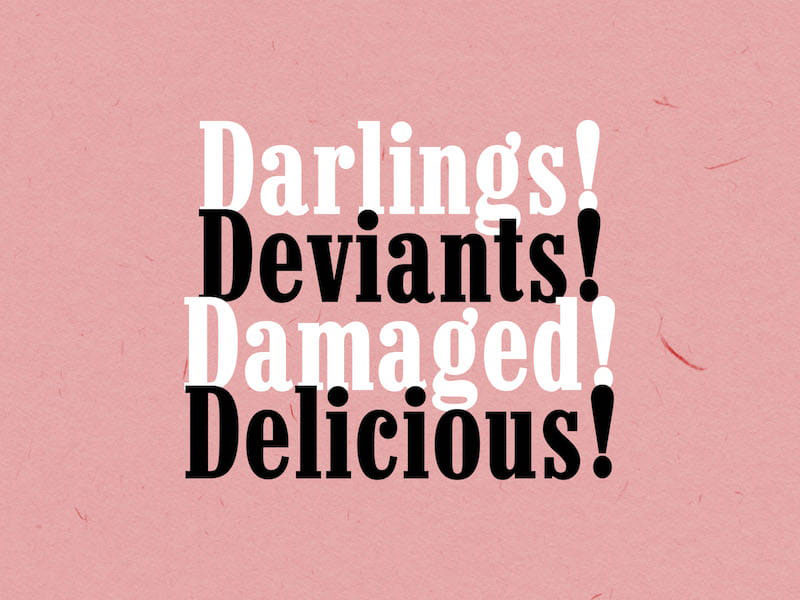




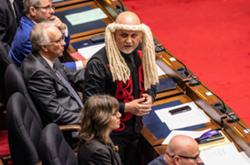
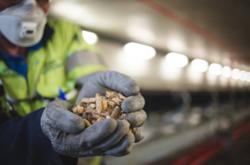
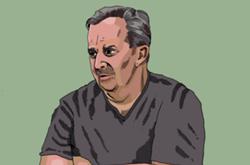

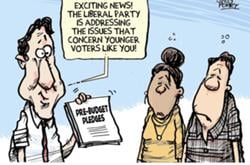
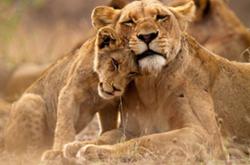


Tyee Commenting Guidelines
Comments that violate guidelines risk being deleted, and violations may result in a temporary or permanent user ban. Maintain the spirit of good conversation to stay in the discussion.
*Please note The Tyee is not a forum for spreading misinformation about COVID-19, denying its existence or minimizing its risk to public health.
Do:
Do not: